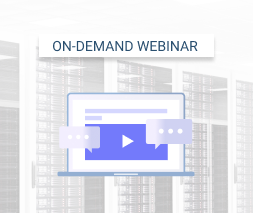IT organizations today need to be savvy when it comes to spending, and the shift from on-premises storage to cloud-based storage is just one example of how data storage providers can deliver the same level of service but at a reduced cost. Providers of services like cloud backup know that businesses are always looking for ways to keep costs down, particularly when it comes to cloud storage.
Tiered storage offerings today are designed to align with business needs—from the most critical of data to “Let’s just keep it in case we need it someday” data, and everything in between. These offerings seem to meet specific needs for cloud-based storage, but at a cost that lines up with the value perceived of the data being stored.
So, when looking at cold storage, is cold storage just cheap storage?
Cold storage isn’t just about storage; it’s also about the service provided in saving data to, and retrieving data from cold storage. And when it comes to the cost of storage (especially storage intended to be used as part of a recovery effort), this becomes very important. If your first consideration is cost, keep in mind that for every less-expensive storage option, there must be trade-offs.
Intangible Cold Storage Costs
For some, the fact that cold storage is less costly (at least up front—more on this later) is all the information they need. But, in reality, cold storage costs for your organization can be higher— both tangibly and intangibly.
First the intangible. It’s meant to be long-term – Any storage tier other than hot storage tends to have some kind of storage time minimum, along with a penalty cost, should you decide to remove the data before the minimum timeframe is reached. For example, Amazon Glacier has a minimum of 90 days of storage. Should you decide to remove the data prior to the 90 days, you’ll still pay for 90 days of storage.
It’s slow – When you think of recovery, you want response times that parallel your organization’s sense of urgency, which is likely measured in minutes. But with cold storage, initial access and retrieval of data is generally available after a number of hours (e.g. Glacier’s standard retrieval is 3-5 hours to obtain the first bit). Faster tiers of expedited retrieval are usually offered, but come at an additional cost that you won’t see until you’re under the gun to deliver a rapid recovery.
It can be less reliable – Even with data that you may not need for years (if at all), it still needs to be accurate and uncorrupted. Cold storage offerings usually have lower durability and availability service levels. While it still touts several nines of service, this can have an impact on an organization’s ability to leverage any restored data, should it not be durable.
Understanding the Cold Storage Pricing
In addition to some of these less tangible costs (that you may only experience should you have a recovery event), there are also more tangible costs that are incurred as a result of using cold storage—particularly during recovery. Assuming you’re considering cold storage in order to save on costs, let’s use an example scenario where you use Amazon for backup storage, and recover to an off-Amazon infrastructure. Let’s assume you have 5TBs of data to initially be stored and then an additional 100GBs in changes monthly.
At the time of writing this article, standard storage pricing for S3 (for the first 50TB/month) is $.023/GB, with Glacier at only $.004/GB. So, storing the initial 5TBs and the monthly 100GBs over a period of a year in S3 costs about $1,500, whereas Glacier costs just under $400, as shown below.
| Month | S3 Only | S3 + Glacier | |||||
|---|---|---|---|---|---|---|---|
| S3 Storage | S3 Cost | S3 Storage | S3 Cost | Glacier Storage | Glacier Cost | Total | |
| 1 | 5,100 | $117.30 | 5,100 | $117.30 | 0 | 0 | $117.30 |
| 2 | 5,200 | $119.60 | 100 | $2.30 | 5,100 | $20.40 | $22.70 |
| 3 | 5,300 | $121.90 | 100 | $2.30 | 5,200 | $20.80 | $23.10 |
| 4 | 5,400 | $124.20 | 100 | $2.30 | 5,300 | $21.20 | $23.50 |
| 5 | 5,500 | $126.50 | 100 | $2.30 | 5,400 | $21.60 | $23.90 |
| 6 | 5,600 | $128.80 | 100 | $2.30 | 5,500 | $22.00 | $24.30 |
| 7 | 5,700 | $131.10 | 100 | $2.30 | 5,600 | $22.40 | $24.70 |
| 8 | 5,800 | $133.40 | 100 | $2.30 | 5,700 | $22.80 | $25.10 |
| 9 | 5,900 | $135.70 | 100 | $2.30 | 5,800 | $23.20 | $25.50 |
| 10 | 6,000 | $138.00 | 100 | $2.30 | 5,900 | $23.60 | $25.90 |
| 11 | 6,100 | $140.30 | 100 | $2.30 | 6,000 | $24.00 | $26.30 |
| 12 | 6,200 | $142.60 | 100 | $2.30 | 6,100 | $24.40 | $26.70 |
| Totals: | $1,559.40 | $142.60 | $246.40 | $389.00 | |||
Further reading What Is Amazon S3 Glacier and How to Use It
Standard retrieval pricing for Glacier is only $.01/GB, with a data access time of 3-5 hours. If you need data faster, “expedited” retrieval (of 1-5 minutes) is available at $.03/GB. At first glance, it seems far less expensive when compared to the $.09/GB Amazon charges to transfer data from S3 out to the Internet, but wait—You still need to pay an additional $.09/GB (the same as with S3) to transfer the data out of Amazon’s infrastructure to yours, making the total cost of retrieval higher than S3.
Assuming you need to recover the initial 5TBs and one incremental backup of 100GBs, the cost with S3 would be a little under $400, with the same recovery costing a bit over $600 with Glacier using expedited retrieval.
Determining Your True Cold Storage Cost
There is many storage, storage management, retrieval, and transfer options available that can materially modify the costs on either side. While there’s no argument that cold storage prices are definitely less, it needs to be considered whether your organization’s most critical data should rest on a storage platform that is designed to provide slower retrieval service, has lower durability and integrity, and costs the organization more in a time of need, simply to save a few hundred dollars every year.





